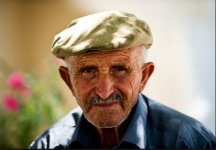Abeis
I expected more from you, this is disappointing.
Authors who are not Albanians, in the West and in the East, today are very careful, nothing is surely but only probably, possible, maybe, doubtful, questionable etc.
You can see author only writes about possibility, yes it is possible because geographical sense but it is unproved and untested (Kaser uses this term).
We know that hypothesis that South Illyrians (in North and Middle Albania) can have link with Albanian make sense, because geographical sense (Fortson uses this term) but we saw that hypothesis is only hypothesis, it is unproven and untestable.
(Who read Wilkes book for him or her is clear that inhabitants of Illyrian areas in Istria, Panonian plain, Western Serbia, Dalmatia and Bosnia nothing to do with today's Albanians, Wilkes left as possibility that connection exists only in the south of Illyria.)
It has same weight as hypothesis that Albanians came from Romania, or that Albanians had link with Thracians, Free Dacians etc. There are more hypothesis and all are unproved and untestable.
Albanians are mostly wrong to unproven and untested hypothesis tries them as truth, I gave more examples in serious scientific papers where the authors criticize this Albanian uncritical and blind opinion, what is worse proclamed by communist dictator Enver Hoxha.
...
Here is a key problem for researchers
McWorther
The story of human language
Albanian and Armenian:
Black sheep.
Both have
borrowed many words from other language groups:
only about 1 in 12 Albanian words is native to the language and only about 1 in 4 Armenian ones. Both languages have also wended quite far along their own paths of development. Albanian wasn’t even discovered to be Indo-European until 1854, and Armenian was long thought to be a kind of Persian.
Baugh and Cable
History of the English language
Moreover, our knowledge of Albanian, except for a few words, extends back only as far as the fifteenth century of our era, and, when we first meet with it, the vocabulary is so mixed with Latin, Greek, Turkish, and Slavonic elements—owing to conquests and other causes—that it is somewhat difficult to isolate the original Albanian. For this reason its position among the languages of the Indo-European family was slow to be recognized. It was formerly classed with the Hellenic group, but since the beginning of the present century it has been recognized as an independent member of the family.
...
These authors speak what is problem, a lot of words Albanian borrowed from other languages and small part, one of twelve words, is Albanian. It is big barrier for researchers.
However today researchers use new technologies.
Gray & Atkinson using
phylogenetic approach got follow result:
Albanian and Indo-Iranian languages have same root. Where Proto Albanian could emerge in that case? In the Balkans? It means and Indic and Iranic emerged in the Balkans. No.











